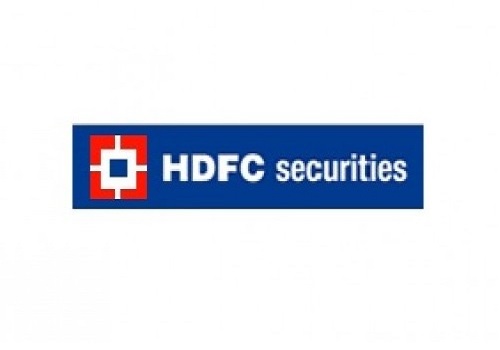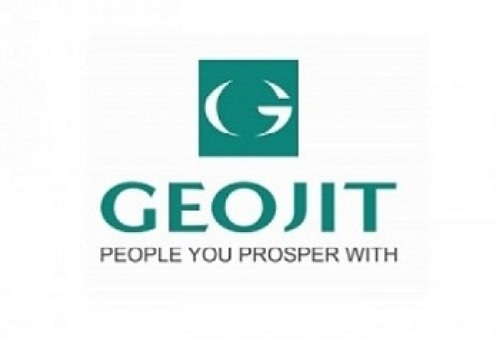Turmeric trading range for the day is 12650-14126 - Kedia Advisory

Gold
Gold prices fell by 0.8% to settle at 71,611 INR per 10 grams as the U.S. dollar and Treasury yields strengthened following U.S. inflation data that aligned with expectations. Despite this decline, gold ended the week and month on a positive note, driven by anticipation of a potential interest rate cut by the U.S. Federal Reserve in September. The personal consumption expenditures (PCE) price index, a key inflation measure, rose by 0.2% in July, matching forecasts. This has led traders to slightly increase the probability of a 25-basis-point rate cut by the Fed next month to 69%, while the likelihood of a 50-basis-point cut has decreased to 31%. Raphael Bostic, President of the Federal Reserve Bank of Atlanta, indicated a cautious stance on rate cuts, emphasizing the need for further clarity on economic conditions before making a decision. In India, gold discounts widened to their highest level in six weeks as a rise in prices dampened demand. Dealers offered discounts of up to $8 an ounce over official domestic prices, up from $6 the previous week, as retail buyers awaited price stabilization. In China, gold discounts ranged from $1 to $10 per ounce, reflecting sluggish demand due to high prices and weak consumer sentiment. From a technical perspective, the gold market is experiencing long liquidation, with a 4.48% drop in open interest to 16,069 contracts as prices decreased by 577 INR. Gold is currently finding support at 71,350 INR, with a potential to test 71,095 INR if this level is breached. On the upside, resistance is expected at 72,030 INR, and a move above this level could lead to prices testing 72,455 INR.
Trading Ideas:
* Gold trading range for the day is 71095-72455.
* Gold softened as the dollar and Treasury yields firmed
* Indian dealers widen discounts to $8/ounce, a six-week high
* Chinese dealers offered discounts between $1 and $10 per ounce on the international spot price
Silver
Silver prices dropped by 2.11% to settle at 85,210 INR per kilogram, as markets digested the latest economic data for indications on the extent of the Federal Reserve’s upcoming rate cuts. The Core Personal Consumption Expenditures (PCE) price index, the Fed’s preferred measure for underlying inflation, rose by 0.2% in July, as anticipated. This modest increase in the inflation gauge kept expectations intact that the U.S. central bank will implement a total of 100 basis points in rate cuts over its three remaining meetings this year. Additionally, the number of Americans filing for new unemployment benefits declined last week, though opportunities for re-employment are becoming scarcer, indicating a likely elevated unemployment rate for August. In India, silver imports are set to nearly double this year, driven by rising demand from solar panel and electronics manufacturers, as well as investor optimism about silver’s potential for higher returns compared to gold. As the world's largest silver consumer, India’s increased imports could further support global prices, which are hovering near their highest levels in over a decade. The country imported 3,625 metric tons of silver last year, but imports in the first half of 2024 have already surged to 4,554 tons, up significantly from just 560 tons during the same period last year. From a technical standpoint, the silver market is experiencing fresh selling pressure, with a significant 17.28% rise in open interest to 28,209 contracts as prices fell by 1,839 INR. Silver currently has support at 84,450 INR, and a decline below this level could see a test of 83,685 INR. On the upside, resistance is expected at 86,530 INR, and surpassing this level could push prices towards 87,845 INR.
Trading Ideas:
* Silver trading range for the day is 83685-87845.
* Silver dropped as markets assessed data for Federal Reserve's rate cuts.
* Core PCE prices, the Federal Reserve's preferred inflation gauge, increased by 0.2% from July.
* US economy grew faster than initially thought in Q2, driven by strong consumer spending and rebounding corporate profits.
Crudeoil
Crude oil prices fell by 2.5% to settle at 6,203 INR per barrel, weighed down by concerns over demand and the potential for increased supply from OPEC+. Fears of reduced demand are being fueled by the slowdown in China’s economy, which is expected to miss its growth targets, raising concerns about weaker demand from Asia. Meanwhile, OPEC+ is set to proceed with a planned oil output increase starting in October. Eight members of the cartel are scheduled to boost output by 180,000 barrels per day, marking the beginning of a reversal of their most recent output cuts of 2.2 million barrels per day, while keeping other cuts in place until the end of 2025. However, ongoing disruptions in Libyan oil production have tempered the decline in prices. In the United States, crude oil inventories decreased by 0.846 million barrels for the week ending August 23, 2024, falling short of the expected 3 million barrel reduction. Stocks at the Cushing, Oklahoma delivery hub also declined by 668 thousand barrels. Gasoline inventories experienced a significant drop of 2.203 million barrels, while distillate fuel inventories rose by 0.275 million barrels. Technically, the crude oil market is under fresh selling pressure, as evidenced by a 55.7% increase in open interest to 9,596 contracts while prices dropped by 159 INR. Crude oil currently finds support at 6,109 INR, with a potential test of 6,016 INR if this support level is breached. Resistance is seen at 6,363 INR, and a move above this level could lead to prices testing 6,524 INR.
Trading Ideas:
* Crudeoil trading range for the day is 6016-6524.
* Crude oil weakened pressured by concerns about demand and the prospect of bigger supply.
* OPEC+ is set to proceed with a planned oil output hike from October
* Libyan output disruptions limited the decline
Naturalgas
Natural gas prices declined by 0.39% to settle at 179 INR per mmBtu, driven by forecasts for slightly milder weather over the next two weeks compared to previous expectations. This price drop occurred despite a decrease in daily natural gas output and a smaller-than-expected weekly storage build. Gas production in the Lower 48 U.S. states has averaged 102.4 billion cubic feet per day (bcfd) so far in August, down from 103.4 bcfd in July. Recent preliminary data indicates that daily output could have fallen by about 1.7 bcfd over the last two days to a two-month low of 101.0 bcfd. While the weather is expected to remain mostly hotter than normal through September 13, the average temperature at the start of September is forecast to be lower than at the start of August. The U.S. Energy Information Administration (EIA) revised its forecast for natural gas output, predicting a larger decline this year compared to earlier estimates due to record-low prices in early 2024. U.S. utilities added 35 billion cubic feet of gas into storage during the week ending August 23, keeping total stockpiles at 3,334 Bcf, which is 228 Bcf higher than the same time last year and 361 Bcf above the five-year average. Technically, the natural gas market is under fresh selling pressure, as evidenced by a 6.91% increase in open interest to 50,799 contracts while prices decreased by 0.7 INR. Natural gas currently has support at 176.1 INR, with a potential to test 173.3 INR if this level is breached. On the upside, resistance is expected at 182.2 INR, and a move above this level could see prices testing 185.5 INR.
Trading Ideas:
* Naturalgas trading range for the day is 173.3-185.5.
* Natural gas prices fell amid forecasts for slightly less heat over the next two weeks than previously expected.
* US utilities added 35 billion cubic feet of gas into storage during the week that ended August 23, 2024
* Last week's increase raised stockpiles to 3,334 Bcf, 228 Bcf higher than last year at this time and 361 Bcf above the five-year average of 2,973 Bcf.
Copper
Copper prices fell by 0.19% to settle at 806 INR per kilogram, pressured by rising inventories, weak demand in China, and a strong U.S. dollar. Copper inventories in London Metal Exchange (LME) registered warehouses surged by 8,700 tons to 322,950 tons, the highest level in about five years and more than double the levels seen in mid-June. This increase in inventory is largely due to heavy exports from China to Asian LME warehouses. Mining giant BHP downgraded its forecast for China's copper demand growth to 1-2% this year, citing a significant expected contraction in housing completions. BHP's cautious outlook reflects broader concerns in the copper market, even as it acknowledges the long-term potential for copper due to the global energy transition. China, the world’s largest copper consumer, has been a key factor in the recent market dynamics. Chinese exports of refined copper surged to 158,000 metric tons in June, a rare occurrence that has pressured prices, with funds offloading long positions. However, this export surge appears to be slowing, with shipments dropping to 70,000 tons in July. The International Copper Study Group (ICSG) reported a global refined copper surplus of 95,000 metric tons in June, compared to 63,000 metric tons in May, indicating a growing surplus in the market. From a technical perspective, the copper market is undergoing long liquidation, with open interest dropping by 1.45% to settle at 10,762 contracts while prices decreased by 1.5 INR. Copper finds support at 801.8 INR, and a break below this level could lead to a test of 797.6 INR. On the upside, resistance is expected at 812.4 INR, and a move above this level could see prices testing 818.8 INR.
Trading Ideas:
* Copper trading range for the day is 797.6-818.8.
* Copper dropped pressured by rising inventories, lacklustre demand in China and a strong dollar.
* Chile's copper output increased around 2% year-on-year in the month to 443,633 metric tons.
* LME copper inventories increased by 8,700 tons to 322,950 tons, the highest for about five years.
Zinc
Zinc prices edged up by 0.19% to settle at 268.7 INR per kilogram, supported by expectations of reduced supply and a seasonal increase in demand in the coming months. However, gains were limited by lingering concerns over the strength of China’s demand recovery, with current supplies remaining adequate. Chinese zinc smelters have already reduced production in July and August, with output declining by 9.2% from June to 536,000 tons, the lowest monthly level in a year. This trend is expected to continue, with production cuts projected at 30,000 to 40,000 tons each month from September to December, potentially reducing annual zinc ingot output by 3-4%.The global zinc market surplus decreased to 8,700 metric tons in June, down from 44,000 tons in May, according to the International Lead and Zinc Study Group (ILZSG). For the first half of 2024, the global surplus stood at 228,000 tons, compared to 452,000 tons in the same period last year, indicating tightening market conditions. In July 2024, China’s refined zinc production fell by 10.3% month-on-month to 489,600 metric tons, and was down 11.15% year-on-year. Heavy rainfall in Sichuan and unexpected production cuts in Yunnan, Guangdong, and Guangxi were significant factors affecting output, alongside scheduled maintenance activities in several regions. Technically, the zinc market is experiencing fresh buying interest, with open interest increasing by 2.8% to settle at 2,241 contracts, while prices rose by 0.5 INR. Zinc is currently supported at 267.2 INR, with a potential to test 265.7 INR if this support level is breached. On the upside, resistance is seen at 270.8 INR, and a break above this level could lead to prices testing 272.9 INR.
Trading Ideas:
* Zinc trading range for the day is 265.7-272.9.
* Zinc remains supported by reduced supply and seasonal demand uplift.
* Limited upside due to concerns about China's demand recovery.
* Treatment charges for zinc concentrates have fallen to historical lows.
Aluminium
Aluminium prices declined by 0.86% to settle at 225.35 INR per kilogram, pressured by concerns of excess supply and rising inventories in SHFE-approved warehouses. Over the past three months, SHFE aluminium stocks have increased by 36%, signaling ample immediate supplies. The discount of aluminium's spot price to the three-month contract on the London Metal Exchange (LME) widened to $29 per ton, further highlighting this oversupply. In June, global primary aluminium production stood at 5.9031 million tons, exceeding consumption of 5.8059 million tons, resulting in a supply surplus of 97,200 tons, according to the World Bureau of Metal Statistics (WBMS). For the first half of 2024, the global surplus amounted to nearly 720,000 tons. Despite these surplus figures, LME aluminium inventories have decreased by 22% over the past three months, reaching 877,950 tons, the lowest level since May. China, the world's largest aluminium producer, saw a significant increase in production, churning out 3.68 million metric tons in July, marking a 6% year-on-year rise and the highest monthly output since 2002. This increase is attributed to new projects in Inner Mongolia and sustained production in other key regions due to profitable market conditions. Technically, the aluminium market is experiencing fresh selling pressure, with open interest increasing by 1.8% to settle at 3,566 contracts, while prices dropped by 1.95 INR. Currently, aluminium has support at 223.7 INR, with potential to test 222.1 INR if this support is breached. On the upside, resistance is observed at 228.2 INR, and a break above this level could lead to prices testing 231.1 INR.
Trading Ideas:
* Aluminium trading range for the day is 222.1-231.1.
* Aluminium dropped pressured by concern about excess supplies as inventories climb in SHFE-approved warehouses
* SHFE aluminium stocks have gained 36% over the past three months.
* Aluminium supply remains elevated, while downstream demand recovery in China is limited
Cottoncandy
Cotton candy prices settled up by 0.43% at 58,000 INR per bale, driven by concerns over reduced acreage in the current kharif cropping season. The area under cotton cultivation has decreased by approximately 9% to 110.49 lakh hectares, compared to 121.24 lakh hectares in the same period last year. The Cotton Association of India (CAI) anticipates that the total acreage will be around 113 lakh hectares this year, down from 127 lakh hectares previously. According to CAI President Atul Ganatra, farmers are increasingly shifting to other crops due to lower yields and high production costs for cotton in India. Additionally, cotton exports to Bangladesh have surged unexpectedly, rising from 15 lakh bales to 28 lakh bales, contributing to tighter opening stocks for the next year. India’s cotton production and consumption for the 2023-24 period are both estimated at around 325 lakh bales, with exports projected at 28 lakh bales and imports at 13 lakh bales. The gap of 15 lakh bales will be covered by reducing last year's stocks. Currently, spinning mills hold about 25 lakh bales, while ginners have 15 lakh bales, and the Cotton Corporation of India possesses 20 lakh bales. Approximately 10 lakh bales are expected to arrive during August-September, providing a total of 70 lakh bales for consumption until September 30. Technically, the cotton candy market is experiencing short covering, with a 0.57% drop in open interest to settle at 173 contracts. Prices have increased by 250 INR, indicating support at 58,000 INR. Resistance is also observed at 58,000 INR, and a move above this level could push prices higher, testing the 58,000 INR mark again.
Trading Ideas:
* Cottoncandy trading range for the day is 58000-58000.
* Cotton dropped on profit booking after prices gained as Cotton acreage trails by 9% at 110 lh
* CAI predicts acreage to be around 113 lh this year, up from 127 lh in the previous year.
* Global cotton production cut by 2.6 million bales; lower in US, India.
* In the global 2024/25 cotton balance sheet, beginning stocks, production and consumption are increased.
Turmeric
Turmeric prices settled slightly up by 0.06% at 13,426 INR per quintal, supported by farmers holding back stocks in anticipation of further price increases and emerging buying interest from stockists. The market is also experiencing tighter supplies, although these gains are limited by news of increased sowing across major turmeric-producing regions. Reports indicate that turmeric sowing in areas like Erode has doubled compared to last year, while states such as Maharashtra, Telangana, and Andhra Pradesh have seen a 30-35% increase in sowing. This could lead to higher production estimates, with the upcoming turmeric crop expected to be around 70-75 lakh bags, even after accounting for the unfavorable weather and low sowing of the previous year. Despite the increase in acreage, the export demand has weakened, with turmeric exports during April-June 2024 down by 19.52% compared to the same period last year. June 2024 exports were 14,974.05 tonnes, a significant drop from both the previous month and June 2023 levels. On the other hand, turmeric imports during April-June 2024 surged by 485.40%, indicating a shift in the market dynamics and possibly increasing domestic consumption needs. Technically, the turmeric market is undergoing short covering, with open interest dropping by 0.91% to settle at 16,380 contracts. Prices saw a minor increase of 8 INR, with current support at 13,038 INR. If prices dip below this level, they could test 12,650 INR. Resistance is likely to be seen at 13,776 INR, and a move above this level could push prices to test the 14,126 INR mark.
Trading Ideas:
* Turmeric trading range for the day is 12650-14126.
* Turmeric settled flat recovering from lows as farmers are holding back stocks
* Support also seen at lower levels amid tighter supplies in the market and emerging buying from stockists.
* In Indonesia, dry weather has accelerated harvesting, which is currently at peak levels.
* In Nizamabad, a major spot market, the price ended at 14113.35 Rupees dropped by -1.46 percent.
Jeera
Jeera prices settled up by 0.69% at 25,710 INR per quintal, buoyed by strong domestic and export demand alongside tight global supplies. Despite these gains, the price upside is tempered by expectations of a substantial increase in production. This season's jeera production is forecasted to be 30% higher at 8.5-9 lakh tonnes due to a significant rise in cultivation areas, particularly in Gujarat and Rajasthan, where sowing areas have increased by 104% and 16%, respectively. This has led to record production estimates in Gujarat, reaching 4.08 lakh tonnes, surpassing previous records. Globally, jeera production has surged, with China increasing output to 55-60 thousand tonnes, and similar boosts are expected in Syria, Turkey, and Afghanistan. Turkey anticipates producing 12-15 thousand tonnes, while Afghanistan's output might double, weather permitting. This increase in supply could exert downward pressure on prices. Domestic jeera exports for April-June 2024 rose by 46.56% to 73,770.58 tonnes compared to the same period last year. However, June exports showed a drop of 29.12% from May 2024, though they were 60.13% higher than June 2023. Despite these fluctuations, the export outlook remains positive, supported by increased sowing and declining international prices. Technically, the market is witnessing short covering, with open interest dropping by 5.08% to 2,241 contracts. Prices are up by 175 INR, with current support at 25,480 INR. A drop below this level could test 25,250 INR. Resistance is seen at 25,870 INR, with potential for prices to test 26,030 INR if this level is breached.
Trading Ideas:
* Jeera trading range for the day is 25250-26030.
* Jeera gains amid robust domestic and export demand besides tight global supplies.
* China's cumin output soared to over 55-60 thousand tons from the previous 28-30 thousand tons.
* Turkey anticipates producing 12-15 thousand tons, while Afghanistan's output could double.
* In Unjha, a major spot market, the price ended at 25517.8 Rupees dropped by -0.01 percent.
Views express by all participants are for information & academic purpose only. Kindly read disclaimer before referring below views.






















